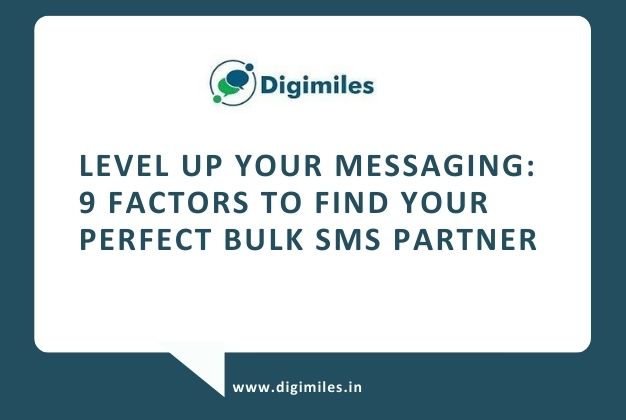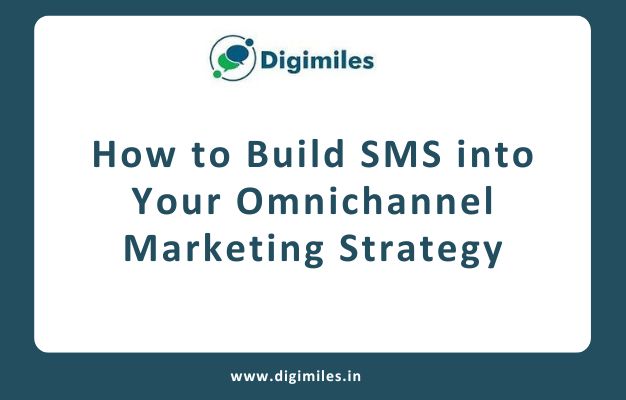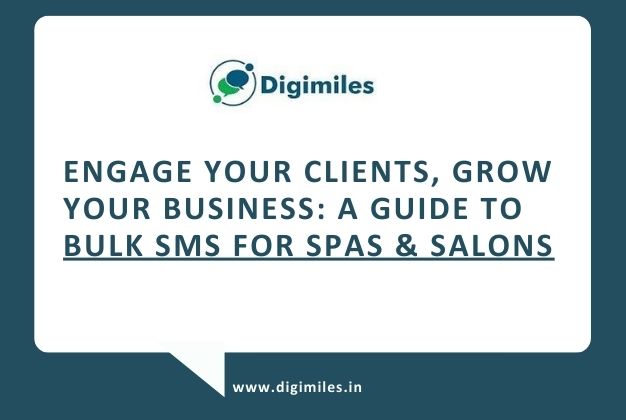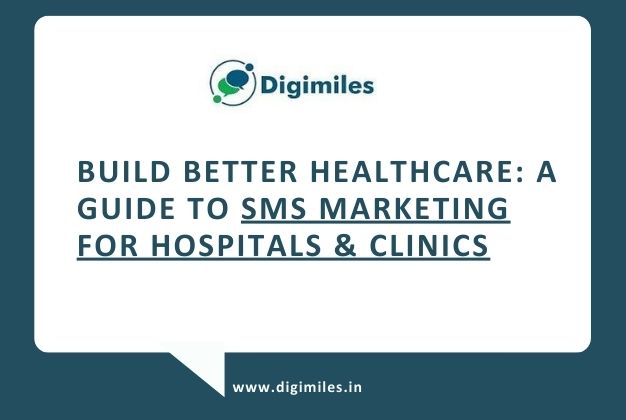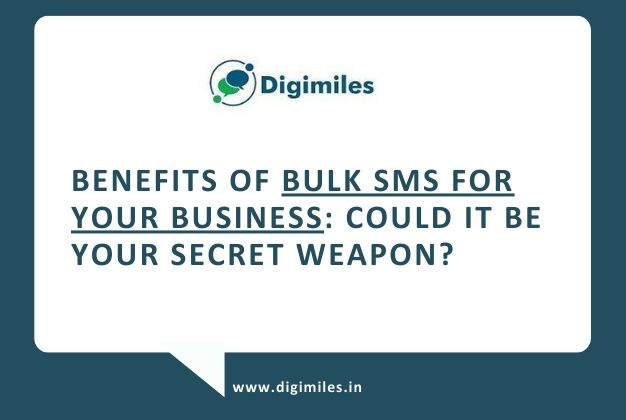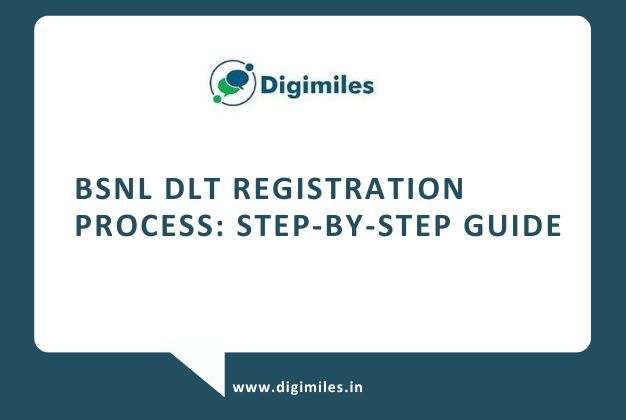A Guide to the Essential SMS Gateway Glossary
Like any other industry, bulk SMS also has a glossary.
This article covers the basic SMS terms to know if you’re leveraging bulk SMS service for your small business. Let’s begin.
1. A2P
Application to Person (A2P) is where you use an application like Digimiles’ to send SMS instead of via a mobile phone (P2P- Peer to Peer).
2. API
Application Programming Interface (API) is a set of definitions and protocols that enables two applications to communicate with each other without the involvement of a human.
In the SMS case, small businesses can integrate HTTP SMS API (provided by the Digimiles) into their eCommerce software or any other tool to send on-demand alerts to their customers. For example, One Time Password (O.T.P), product delivery confirmation and statuses, etc.
3. Alphabetic sender ID
The combination of alphabetic characters. In India, brands can use a 6-alphabetic sender ID to send SMS. However, the sender ID must represent the brand name in short.
The receiver can’t reply to such messages directly.
4. Autoresponder
Brands now can set an auto responder, usually a text message, as a response to the SMS that customers send.
5. Bulk SMS
Bulk SMS is sending one SMS to bulk contacts using a dashboard. Any SMS dashboard can send a high volume of SMS simultaneously, defining bulk SMS.
Brands now can also leverage International bulk SMS to target audiences from foreign countries.
6. Bulk SMS provider
The companies like Digimiles make sending bulk SMS possible.
7. Bulk SMS reseller
Any company that purchases the SMS gateway from the aggregator sells it as a service to its customers under its brand name.
8. Concatenated SMS
Let’s say the sender creates an SMS of 160+ characters and sends it. The receiver’s mobile phone detects the length and automatically divides the text into two, which are then transmitted separately. Each segment of the whole SMS will again form as one text, so it refers to Concatenated SMS.
9. Carrier
A company that provides SMS and voice service to aggregators and consumers is called Carrier (Mobile operator). When you send an SMS, the carrier carries the SMS on their network and drops it at the receiver’s end.
10. Character
An element of SMS length measurement. Characters in an SMS include alphabets, numbers, punctuation marks, emojis, symbols, and spaces.
11. Compliance
Following the SMS regulations laid by TRAI (Telecom Regulatory Authority of India) is known as compliance.
10 Do’s and Dont’s of SMS marketing
12. Consent
An express affirmation from the customer to receive SMS communications from the brand in a written or digital form.
13. CTA
Call-To-Action (CTA) in the SMS industry holds the exact definition and purpose as marketing.
CTA encourages the receivers to take any action about the SMS. For example, CTAs like ‘Click Now,’ ‘Call us,’ etc., drive good engagement when deployed in an SMS campaign.
14. DLR
It is known as the Delivery Reporting of the text message you send from the SMS dashboard.
DLR is a feature of an SMS gateway that reports back on the delivery status of the SMS you send.
Usual DLR statuses include ‘SMS delivered’, ‘SMS pending’, ‘SMS failed’, etc.
15. DND
Do Not Disturb (DND) is a term highly used in the SMS industry to describe users who have opted-out of sharing their contact information and from receiving promotional SMS from any random brands, they didn’t opt-in for.
16. Dynamic field
Fields within an SMS that can be customized (personalized) when sending one SMS to bulk contacts. Dynamic field values correspond to the particular elements of each user, such as the name, the date of their latest purchase, bill amount, unique coupon code, and so on.
17. Flash SMS
When a brand sends flash SMS, it is directly displayed on their mobile screen instead of in the inbox. The mobile will not store it, and it is like one-time info passing.
18. MSISDN
Mobile Station International Subscriber Directory Number (MSISDN). In short, it is the phone number, including the country code.
The maximum length of an MSISDN is 15 digits.
19. O.T.P
One-Time-Password (OTP) service is widely used worldwide to verify users. Through this automated mechanism, the brand generates a single-use password and sends it to users who request to log into their account.
OTP SMS is also known as 2-factor authentication.
20. Promotional bulk SMS
Also known as SMS marketing. Promotional SMS is sent to generate leads, increase sales and conversions, promote a new business or service, or raise brand awareness.
Try Promotional bulk SMS for your small business
21. SMPP
SMPP (Short Message Peer to Peer) is a full-fledged messaging facility with excellent reliability and capacity with API and portal access to send and receive SMS and enables the ability to manage suppliers and customers and SMS routing.
Usually, SMPP is used by SMS aggregators to offer SMS services to their enterprise customers and distributors. SMS aggregator will have a team of developers and testers to develop, deploy and debug the overall messaging process.
22. Short Code & Long Code
Short code numbers are usually 5 to 7 characters and can be used to send and receive text messages. For example: When using a promotional SMS service, the sender can add a 6-digit sender ID to transmit the SMS.
Short codes are also used to capture customers’ responses to the SMS sent by the brand with the specific keyword option.
Long code service serves similar to Shortcode. However, as the name suggests, long code numbers are long in size.
Short code and Long code SMS are also well known as 2-way messaging, enabling the customers to record their response in action to the SMS they receive from brands.
23. Service Implicit or Transactional SMS
Service implicit SMS service is used to deliver informational SMS such as O.T.Ps, timely alerts, on-demand notifications, and customer reminders.
24. SMS gateway
SMS gateway is nothing but the SMS dashboard a brand uses to send SMS to its customers. The standard protocols of an SMS gateway are HTTP (via API) and SMPP (dashboard).
25. SMS campaign
A project involves sending bulk SMS to specific customers to achieve a particular goal.
For example, a reminder SMS to all the users who abandoned the shopping cart.
26. Opt-in and Opt-out
Opt-in is when a prospect or customer permits a brand to receive their SMS’s.
Opt-out is a facility brand provides the customer to unsubscribe from the brand’s further SMS communications.
27. Short links
A short link facility is helpful when you have an ugly or long URL and want to make it short and beautiful to add it to the text message.
28. Sample coding
A sample of Strings of commands for a program written in a computer program language like PHP, HTML, Java, Magento, etc.
29. SMS scheduling
SMS you compose in advance and schedule it for a specific date and time.
30. SMS character limit
The usual character limit for one SMS is 160. However, beyond 160 can be SMS-concatenated, and brands will be charged multiple SMS credits.
For example, let’s see the calculation for English characters:
- 1 standard SMS message = up to 160 characters
- 2 concatenated SMS messages = up to 306 characters
- 3 concatenated SMS messages = up to 459 characters
- 4 concatenated SMS messages = up to 612 characters
- 5 concatenated SMS messages = up to 765 characters
- etc. (153 x number of individual concatenated SMS messages)
Below is the calculation for Unicode SMS:
UTF-16 encoding (including special characters):
- 1 standard SMS message = up to 70 characters
- 2 concatenated SMS messages = up to 134 characters
- 3 concatenated SMS messages = up to 201 characters
- 4 concatenated SMS messages = up to 268 characters
- 5 concatenated SMS messages = up to 335 characters
- etc. (67 x number of individual concatenated SMS messages)
31. Unicode
Unicode is an industry protocol allowing SMS senders to send in any regional language. For example, Hindi, Telugu, Kannada, Marathi, Malayalam, Tamil, Bengali, etc.
However, the receiver’s mobile must support receiving Unicode text messages.
32. DLT registration
According to TRAI TCCPR 2018, it is now mandatory for any business/enterprise/public company that wants to use bulk SMS service in India must register on any DLT portal.
DLT registration includes entity KYC registration and register sender ID and templates.
The Wrap on our Bulk SMS Glossary
Now that you have learned the widely used terms in the bulk SMS industry, you will be ready to take control of your bulk SMS campaigns and make the most of them.

